#neringa
Photo

#Preila #Lithuania #Z9 #NikonZ9 #nikkor50mmf12 #nikon50mmf12s #nikonmirrorless #nikoneurope #Lietuva #kaunastic #winter2023 #baltijosjura #balticsea #curonianspit #neringa #curonianspitnationalpark #smelis (at Preila, Neringa) https://www.instagram.com/p/CnFWpXCNfcA/?igshid=NGJjMDIxMWI=
#preila#lithuania#z9#nikonz9#nikkor50mmf12#nikon50mmf12s#nikonmirrorless#nikoneurope#lietuva#kaunastic#winter2023#baltijosjura#balticsea#curonianspit#neringa#curonianspitnationalpark#smelis
179 notes
·
View notes
Text




Some photos I took while being in Nida (Lithuania), where my good omens fic takes place
#crowley x aziraphale#ineffable spouses#ineffable husbands#good omens#good omens au#lithuania#nida#neringa
16 notes
·
View notes
Text

16 notes
·
View notes
Text
Užgavėnės🇱🇹👸🏻
❄️🌷❄️❤️🔥


instagram








Jau šį sekmadienį vasario 11 d. 14 val. Teatro aikštėje - Užgavėnės!
Klaipėdos etnokultūros centras kviečia į nuotaikingą, aktyvią ir triukšmingą šventę.
Kviesime stebėti Kanapinio ir Lašininio varžytuves dėl nuotakos rankos, o kartu su Morė, sudegs ir metų negandos!
Already this Sunday, February 11. at 2 p.m. On the theater square - Mardi Gras!
The Klaipėda ethnocultural center invites you to a cheerful, active and noisy celebration.
We will invite you to watch Kanapinis and Lašininis compete for the bride's hand, and together with Morė, the troubles of the year will burn!
youtube
3 notes
·
View notes
Text
Happy happy happy Egle ☺️

In Nida, Lithuania

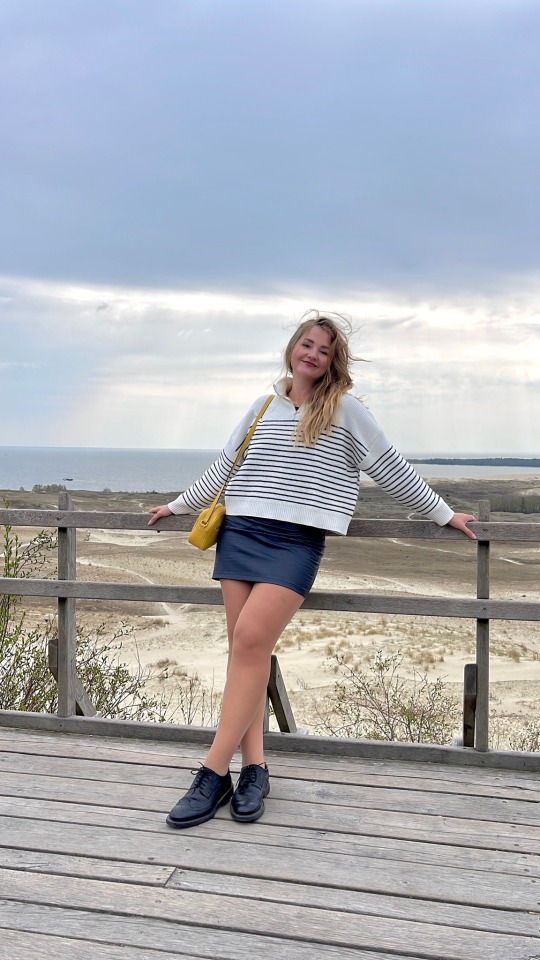
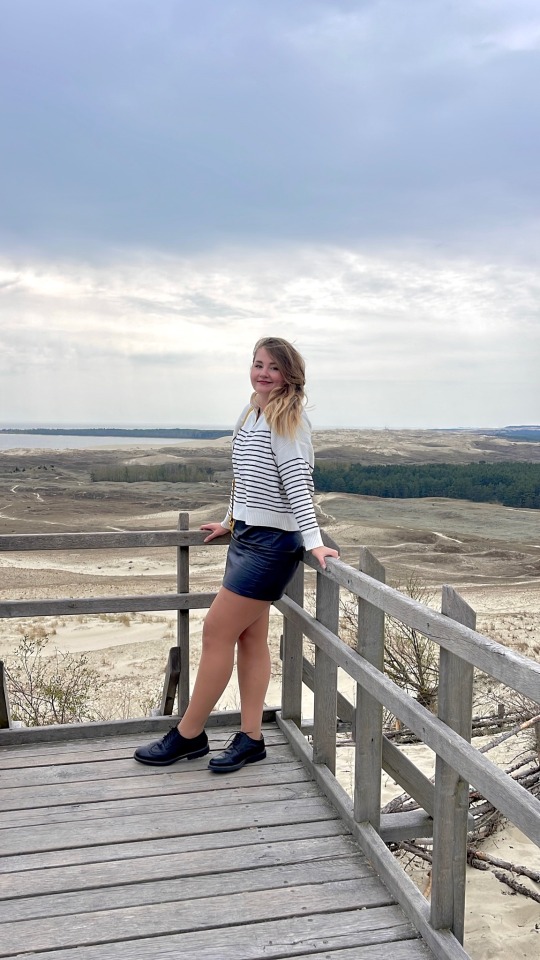

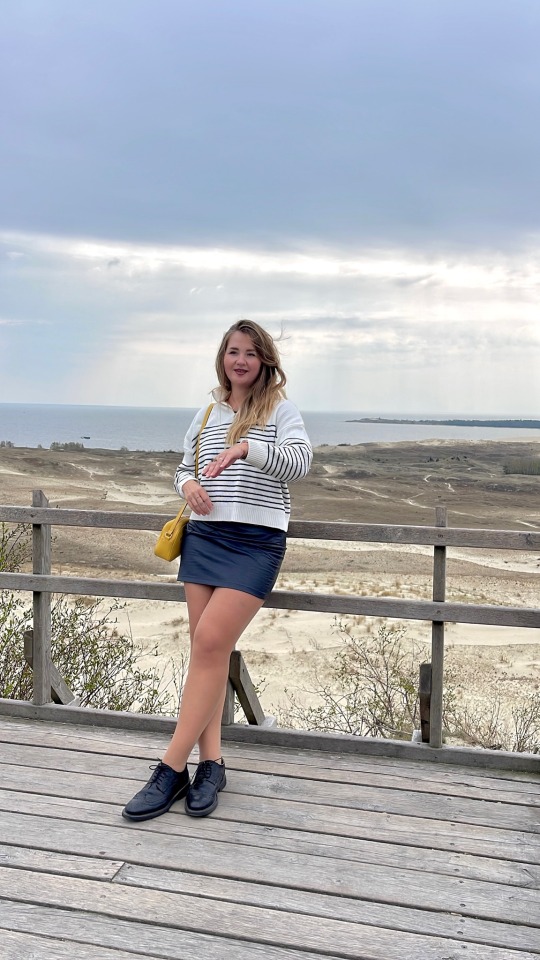
We wanted to stop by the dead dunes, too, but there was no parking 😩
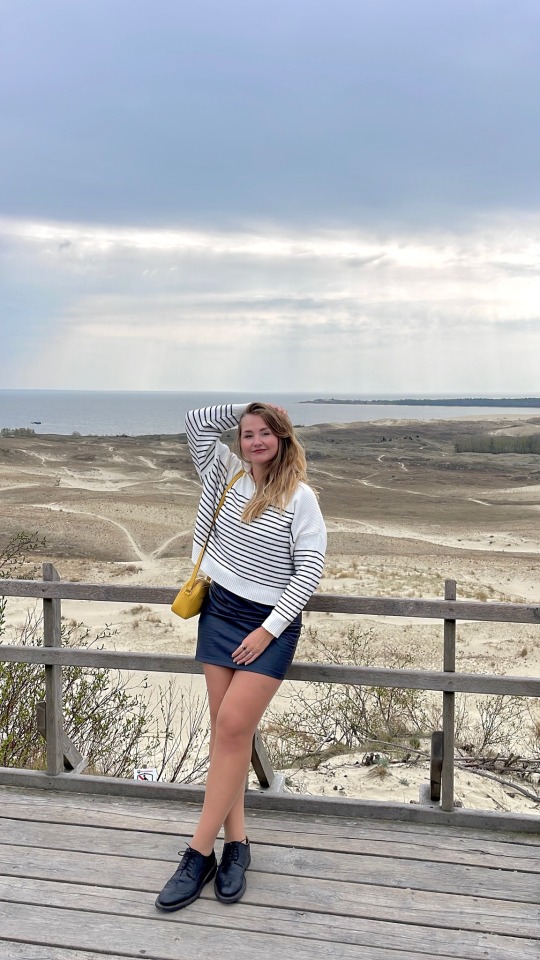

Honestly Neringa is the type of place you could easily spend a day sun up to sun down, if not longer. I’d love to rent out a place there and work on art for like a week.
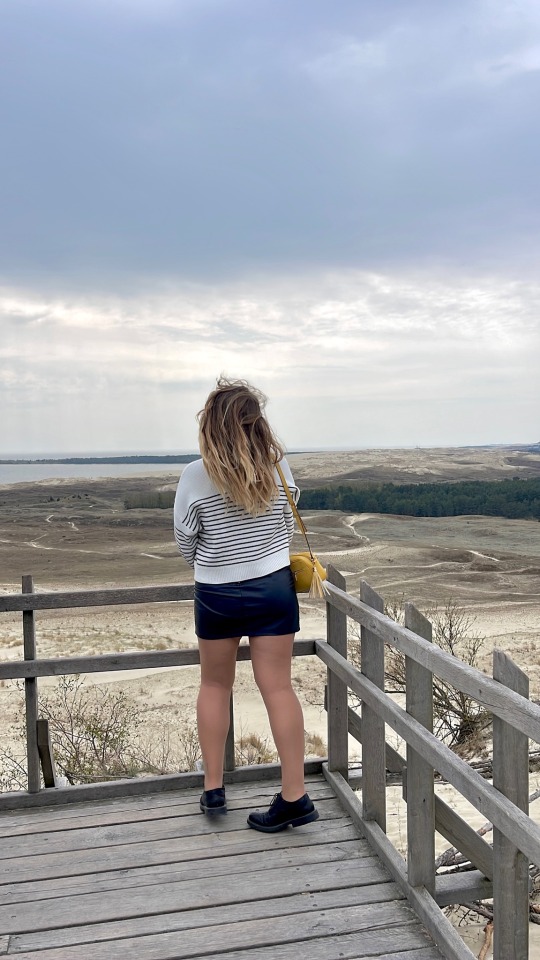
7 notes
·
View notes
Photo

https://neringavilnius.com/
#Neringa#hotel#restaurant#bar#Lithuania#colors#typography#type#typeface#font#Editorial New#GT America Expanded#2022#Week 18#website#web design#inspire#inspiration#happywebdesign
6 notes
·
View notes
Text
- Neringa
#neringa križiūtė#neringa kriziute#curvy#curve model#thick#curvy model#thighs#thicc#sexy model#sexy cute
2K notes
·
View notes
Photo

🌊BALTIC DUNES • Neringa on the Curonian Spit is home to these dreamlike dunes. Photos by KAZIMIERAS MIZGIRIS. #nida #neringa #curonianspit #balticdunes (at Curonian Spit National Park) https://www.instagram.com/p/CkHRBe2vsv-/?igshid=NGJjMDIxMWI=
1 note
·
View note
Text
Travel guide to Neringa: Nida and Juodkrantė resorts in Lithuania
Travel guide to Neringa: Nida and Juodkrantė resorts in Lithuania
Welcome to Neringa – the sandy strip of land next to the Baltic sea. In this video you’ll see everything you need to know about Neringa travel, Nida and Juodkrantė resorts and the Curonian Spit National Park. From the sandy dunes of Parnidis and Nagliai to the best spots on the beach and Thomas Mann heritage in Nida.
Neringa is probably the one of the most unique place in Lithuania, and is…
View On WordPress
0 notes
Photo

#Neringa #Lithuania #Lietuva #dronas #Mavic3 #djimavic3 #winter2023 #lithuanianature #kursiumarios #kursiunerija #neringa #curonianspitnationalpark #preila (at Neringa, Klaipėdos Apskritis, Lithuania) https://www.instagram.com/p/CnNJZg5Nt_u/?igshid=NGJjMDIxMWI=
#neringa#lithuania#lietuva#dronas#mavic3#djimavic3#winter2023#lithuanianature#kursiumarios#kursiunerija#curonianspitnationalpark#preila
7 notes
·
View notes
Text
Kuršių Nerija🇱🇹👸🏻

Lithuania holidays
Immersed in sea, snow, sand and silence: a winter break in Lithuania
A 60-mile sandbar dotted with forests and icy lagoons, the Curonian Spit’s buried villages, elk and elemental beauty attracted Sartre and De Beauvoir
Nick Hunt
Mon 20 Feb 2023 02.00 EST
Small icebergs bob on the waves. The beach is grey and frozen. To the north are the Dead Dunes, and to the south – past the Valley of Death – is the forested peninsula. Squeezed between a freshwater lagoon and the roaring Baltic Sea, the shifting sand beneath my feet has swallowed villages, occasionally spitting out bones from abandoned cemeteries. It is, perhaps, an unlikely destination for a winter holiday.
But everything about Lithuania’s Curonian Spit is unlikely, and this is the secret of its stark, unreal beauty. A 61-mile-long sandbar that arcs alongside the Baltic coast, in Lithuania, its unique ecology has gained it Unesco world heritage site status. A landmass formed from enormous dunes that rose from the sea 5,000 years ago – legend says they were created by a giantess called Neringa – the spit became densely forested with birch, oak and pine.

Over the centuries it was settled by pagan Balts who traded in the amber on its coast – the start of the ancient Amber Route that stretched to the Mediterranean – and then by Prussians & Lithuanians. Today there are elk and boar in its forests, miles of unspoiled white sand beaches, and the fossilised resin of millions-of-years-old pines can still be found along its shore, translucent pebbles that glow like honey when the light shines through. Most visitors come in summer but we arrive in January, drawn by the thought of winter skies, snow-covered sand and silence.
The journey is possible by public transport, but we hire a car in Vilnius and drive for three and a half hours to reach the port of Klaipėda, where a clanking vehicle ferry transports us across the northern end of the Curonian Lagoon. From there, the spit’s only road leads south through dense forest into the Curonian Spit national park. At the village of Juodkrante we stop to climb the Hill of Witches, once a pagan pilgrimage site and now covered with wooden statues depicting the giantess Neringa and other figures from Lithuanian folklore. Appropriately for Europe’s pagan country there’s a distinctively animist flavour to the folk culture here. It only seems natural that the land be alive.
It is: in the 18th century, people started felling the forests that had kept the dunes in place, and mountains of sand began migrating. Despite efforts to hold them back they engulfed entire villages, burying 14 settlements over the next hundred years. The rampaging dunes were only halted when a German astronomer called Johann Daniel Titius proposed the building of a 60-mile-long sand ridge, along with a dedicated reforestation campaign.
Ice clunks against the shore, the wind whistles in the pines, and there is an atmosphere of deep hibernation
This early ecological restoration project worked only too well: now the dunes have been tamed. Visitors are warned that a single footstep can dislodge tonnes of sand, and the giant Parnidis Dune, the spit’s most iconic feature, has lost 10 metres of its height in the past three decades. Boardwalks protect the most popular dunes from traipsing human feet, and there are “strict reserves” where people cannot enter. Throughout our stay I am struck by the delicate balance between humans and nature, on this slender thread of sand between salt and fresh water.

We make our base in the village of Nida. Modern apartments lie inland but the seafront is lined with wooden fishermen’s cottages painted oxide red, with carved gables jutting up like the dragons on Viking longboats. Once an artist colony – Thomas Mann had a summer house here, and Jean-Paul Sartre and Simone de Beauvoir were prominent visitors – it transforms into a holiday resort in warmer months, when thousands of Polish and German tourists come to swim and sunbathe.
In winter it’s practically deserted, but that suits us fine. Ice clunks against the shore, the wind whistles in the pines, and there is an atmosphere of deep hibernation. In a coastal meadow called the Valley of Silence we take a seat on Neringa’s Chair – an artist’s installation carved from giant blocks of wood – to watch the ice in the lagoon and listen to the sound of nothing.

Neringa's chair🇱🇹👸🏻
The following day we climb the steps to the summit of Parnidis, 52 metres high and still a “drifting dune” that moves between 0.5 and 10 metres a year. Topped by the imposing obelisk of a granite sundial carved with runes, a monument to Baltic mythology, it affords a sweeping view over sand, sea and sky. From here, a marked walking trail leads on a three-hour loop along the edge of the frozen desert – we catch a glimpse of a sea otter on the icy shore below – through the ominously named Valley of Death and along the boundary of the Grobstas Strict nature reserve, which forms a protected no man’s land between Lithuanian territory.
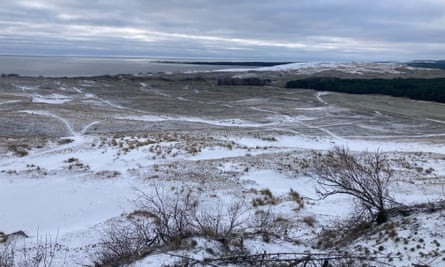
Then a path through pine forest takes us to the Baltic Sea, an abstract painting of slate grey, deep blue and flecks of white. We strike amber on this beach, filling our pockets with prehistoric resin that ranges in colour from the palest honey to opal and magma red, and return to the guesthouse with the sea still roaring in our ears. Amber washes up on these beaches every winter.
Half a dozen villages lie buried somewhere under our feet, commemorated by an installation of six stark wooden crosses
A short drive to the north is another reserve called the Dead Dunes, a further testament to the awesome power of sand. Accessible via a series of boardwalks – signs warn against stepping elsewhere to protect the delicate ecology – this is the most eerily beautiful place we’ve seen so far. Half a dozen villages lie buried somewhere under our feet, commemorated by an installation of six stark wooden crosses. The prints of foxes, deer and birds stipple the sand in all directions, a reminder that this seeming desert is a haven for wildlife, and far away are the dark bulks of elk grazing on the beachgrass.

• I end the day with something I’ve been steeling myself for all week: a breathless plunge in the lagoon, wading through the slush-ice. Ten seconds is all I can take, and when I emerge my hands and feet have turned an alarming shade of purple. Luckily, Lithuanian cuisine is the very definition of restorative: cheese soup, potato pancakes, dumplings in every shape and size, cabbage-wrapped pork, salted herring, and the amazing gyrbu sriuba, which is wild mushroom soup served in a bowl made of rye bread. The only green vegetable we see during our stay is a gherkin, but you don’t come to the Baltic coast for greenery in winter.
If you come for anything it’s for sea, snow, sand and silence. After immersion in all these things, the roar of traffic on the mainland in the industrial port of Klaipėda comes as a shock. But on our drive back to the ferry, we had a last sighting of two elk – much closer than the ones before – lolloping between the trees that anchor the drifting dunes in place. The vision stays with me for a long time. Days later, I find flecks of amber in my pocket.
The bus from Vilnius to Nida costs around €20, or cars can be hired from Vilnius train station (we used TopRent). The car ferry from Klaipeda to the Curonian Spit costs €16 return. Accommodation in Apartamentai Niden from €58 per night
I hope you appreciated this article.
0 notes
Text
Nida, Lithuania with my cousins 🫶🏻




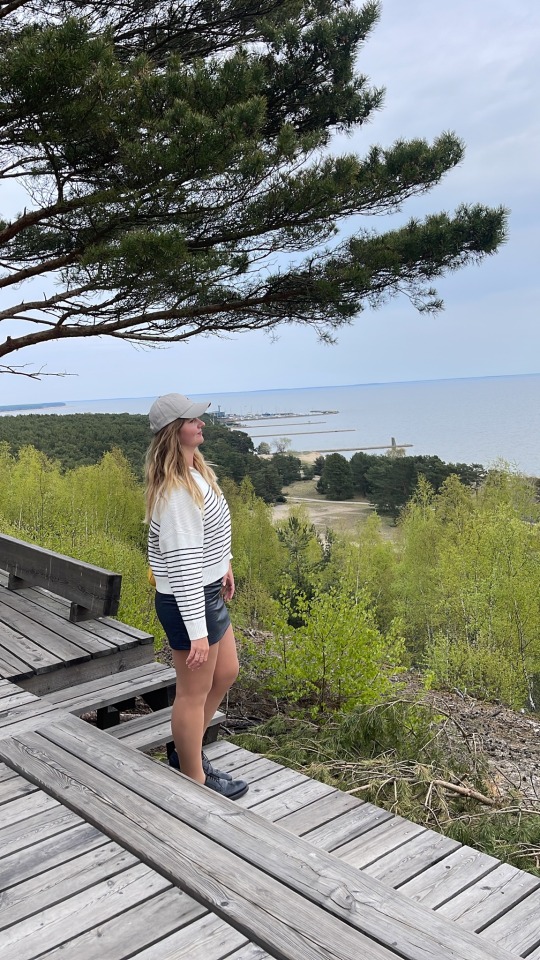


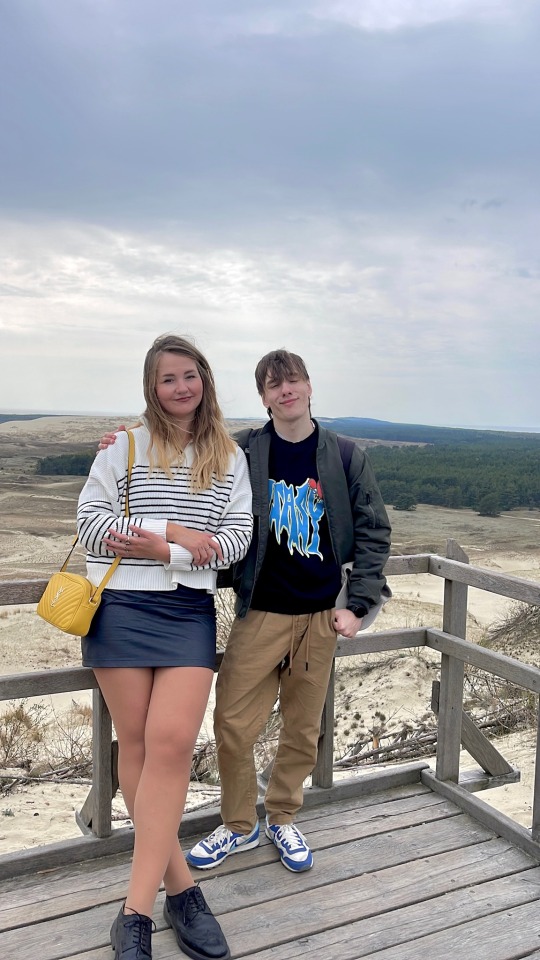

4 notes
·
View notes



